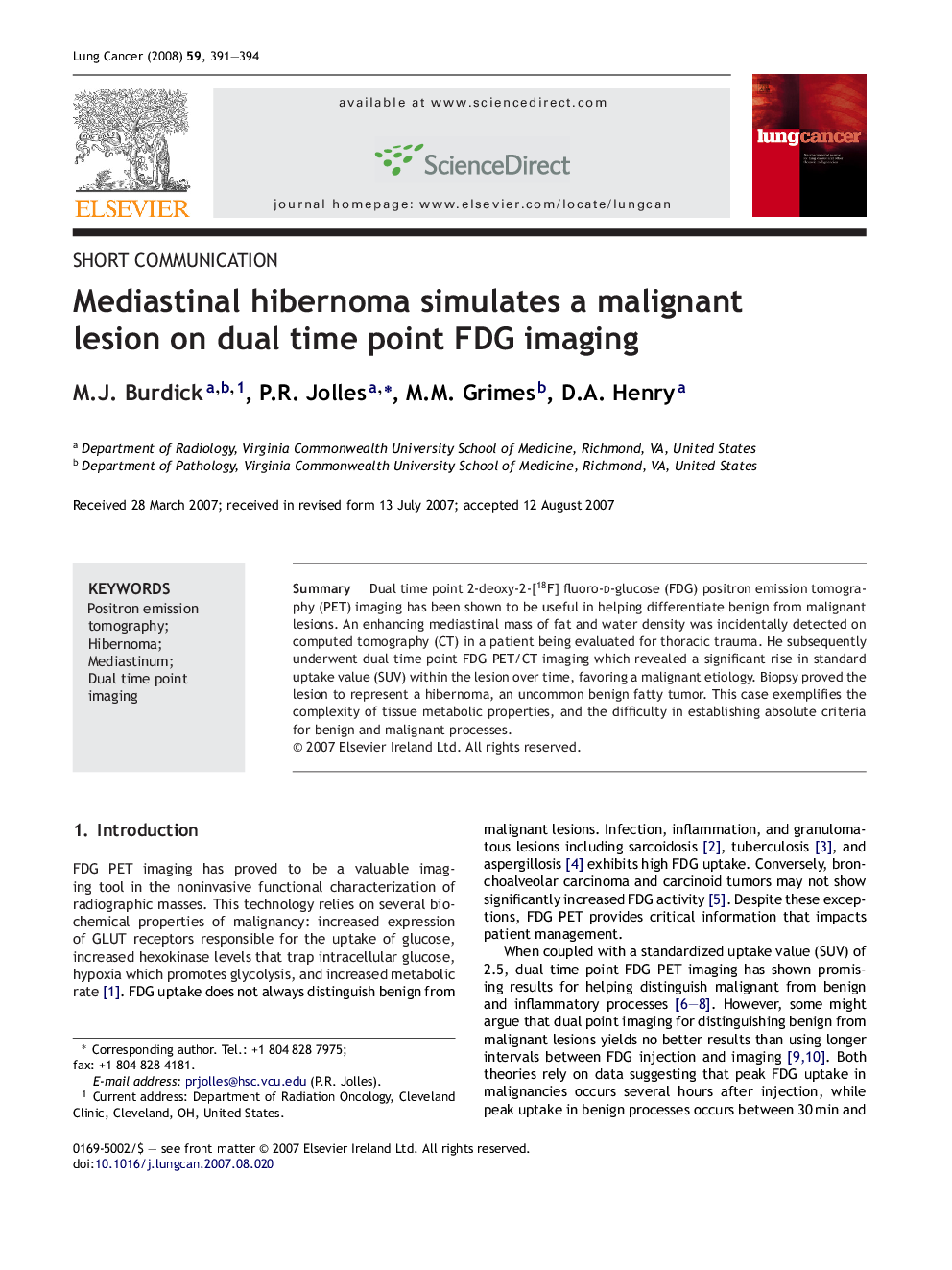| Article ID | Journal | Published Year | Pages | File Type |
|---|---|---|---|---|
| 2143704 | Lung Cancer | 2008 | 4 Pages |
SummaryDual time point 2-deoxy-2-[18F] fluoro-d-glucose (FDG) positron emission tomography (PET) imaging has been shown to be useful in helping differentiate benign from malignant lesions. An enhancing mediastinal mass of fat and water density was incidentally detected on computed tomography (CT) in a patient being evaluated for thoracic trauma. He subsequently underwent dual time point FDG PET/CT imaging which revealed a significant rise in standard uptake value (SUV) within the lesion over time, favoring a malignant etiology. Biopsy proved the lesion to represent a hibernoma, an uncommon benign fatty tumor. This case exemplifies the complexity of tissue metabolic properties, and the difficulty in establishing absolute criteria for benign and malignant processes.
